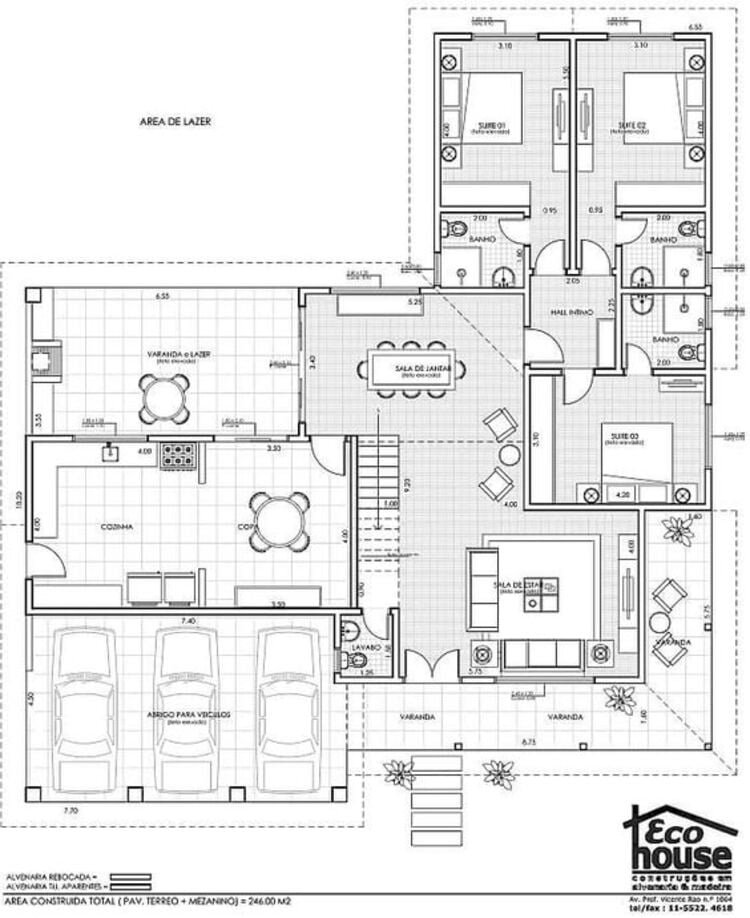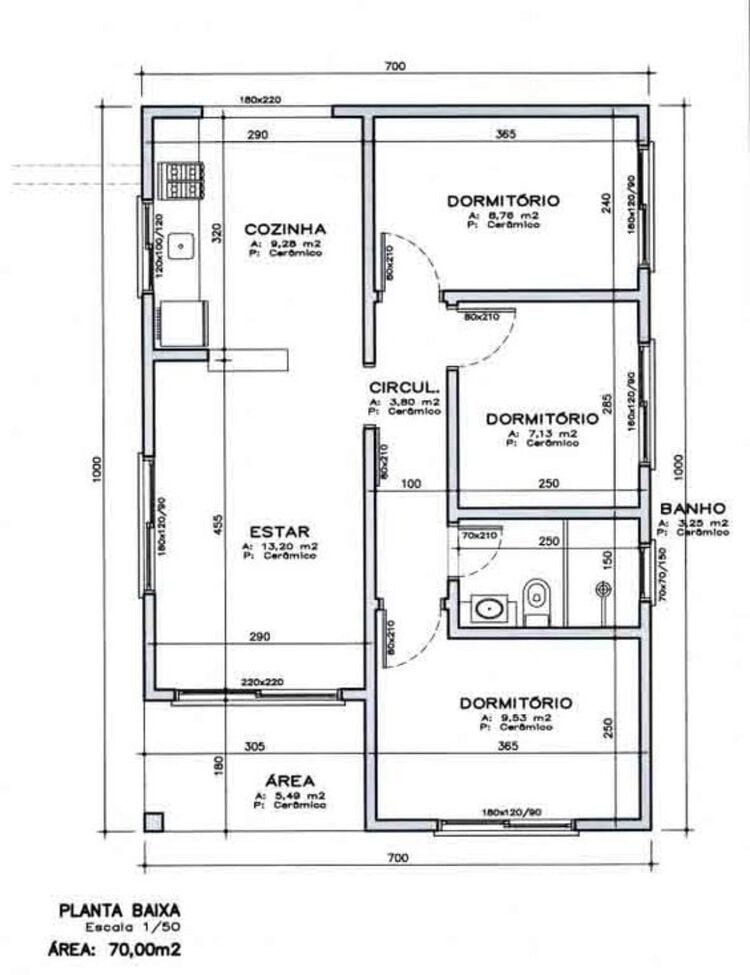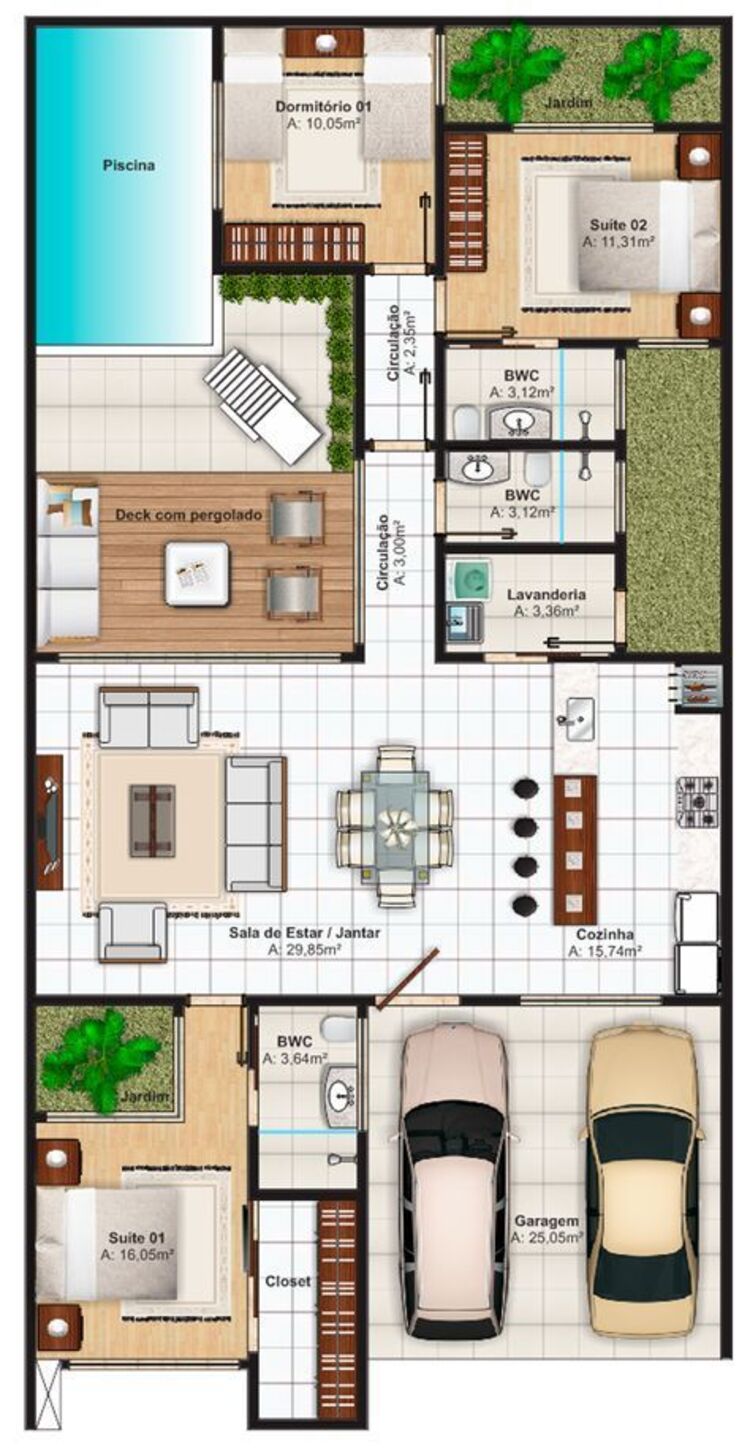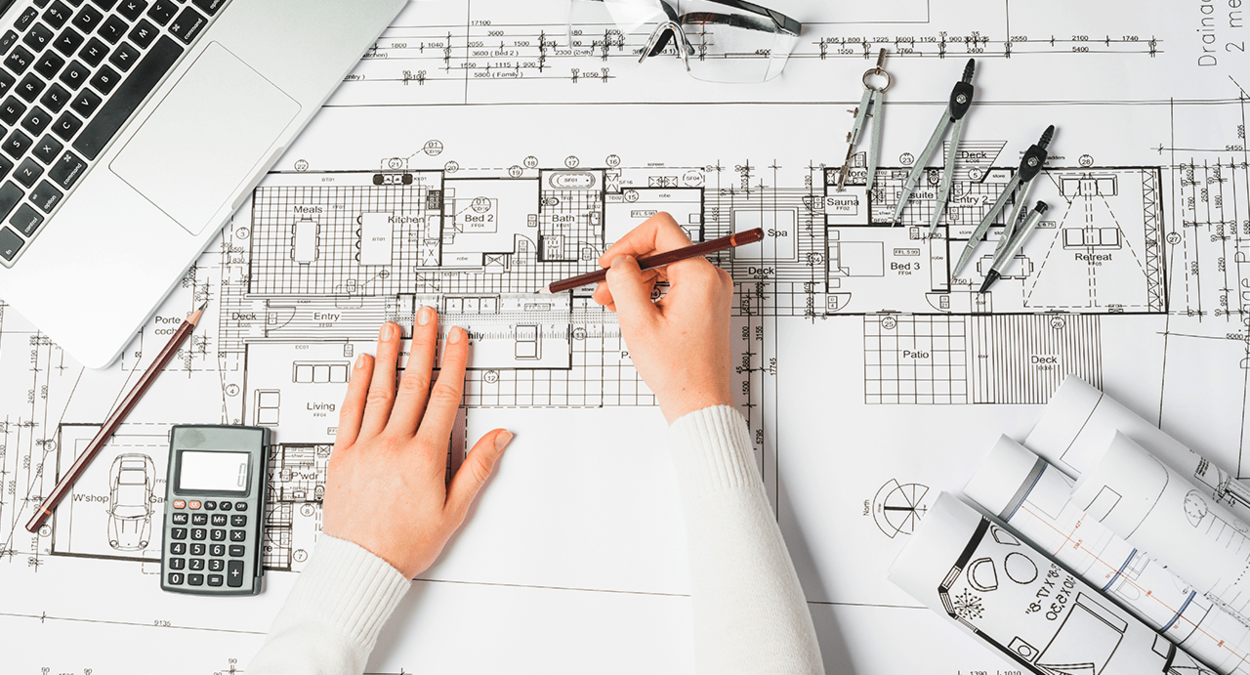The first step to building a house is planning. To do this, when talking to an architect, he will need to draw up a floor plan. But, after all, do you know what this is? This essential element in civil construction is a drawing that shows the size and positioning of each room in the house.
Although there are several models of house or apartment plans, today we will talk about the floor plan. Then, you will see:
- What is a floor plan
- How to make yours
- How much does a floor plan cost
What is a floor plan?
Basically, it is a technical drawing of a house based on an imaginary horizontal section made 1.50m above the floor. In other words, it’s as if we removed the roof from the house and were looking at the rooms from above.
Here, residents will be presented with what will be done in the project. As a result, all environments will be positioned such as the living room, bedroom, bathroom, kitchen, among others.
The floor plan can be created for different environments. For example, for an entire building, an apartment, an entire floor and even for a single room in the house.
Furthermore, this drawing will serve as a guide for bricklayers. Therefore, it needs to be very detailed so that there are no doubts.
Why 1.50m tall?
This measurement is used because it allows the position of doors and windows to be identified even with the cut.
What should be in a floor plan?
There are three fundamental elements to producing a floor plan:
- Scale: this means that all elements contained in the drawing will be proportional to their actual size. For example, windows, doors and furniture. In architecture, the most used scale follows the standard of 1:50 and 1:100 for residential projects. In other words, “every centimeter of the floor plan will be 50 times smaller than reality”, explained EntendAntes.
- Dimension lines: translates the measurements of each item that will be in the room.
- Plan with layout: these are drawing models that already include cabinets, stairs, appliances, among others.
How to make a floor plan?

Although it seems like a simple task, there are many guidelines and steps that need to be followed to create a floor plan, even if it is the simplest version.
Firstly, it is extremely important to follow the standards established by the Brazilian Association of Technical Standards, known as ABNT.
The use of quality software is also essential to ensure a more realistic result that is exactly what you want. Some of the best known are AutoCad and Google SjetchUp. The advantage of using them is that the computer programs allow you to see the project in a 3D format.
As a result, it becomes much easier to understand each item on the plan and is even easier for residents who will be viewing it. To make a floor plan you basically need to follow 7 steps.
1.Sketch
It is at this stage that residents will present to the architect what they want in their residence. In other words, it is a very simple and raw drawing where the professional will visualize the main idea.
2. Lot drawing
If the objective of the plan is to build a house from scratch, it is very important to consider the design of the land. After all, each one has its own specificities. And, to make things easier, it is possible to use some features in favor of construction.
Here, it is worth mentioning that it is necessary to have all the dimensions of the land. Not just the width, but also the height and depth. This way, it will be possible to delimit the space that the house will occupy within the land as well as its composition.
However, if the objective of the project is renovation, this space will probably be disregarded.
3. House design
When the lot design is perfect, you can move on to the next step. Basically, this step consists of defining the size of each room and taking the walls. In addition, openings will be added. For example, windows and doors.
4. Enter the essentials

When making a floor plan, you must consider the spaces that will be needed to open the door and window. That’s why it’s common to see in this type of drawing a quarter circle of everyone in every room.
Another point that deserves attention is the inclusion of essential items in each. For example, the toilet, kitchen counter and sink already need to have a defined position. This will delimit the plumbing space in the house and where other elements will be added.
5. Levels and quotas
The drawing looks quite confusing. However, each line represents fundamental information for the construction team. At this stage, the dimensions of the elements of the house will be added. Like quotas and levels, for example.
6. House coverage
If you see any dashed lines on a floor plan, it means that this enclosed area is the part of the house that will be covered. Despite no longer being in view at 1.5m, the line is an indication of the upper part of the house. As if it were a townhouse, for example.
Here, it will be easier to identify which space will be covered and which will not.
7. Humanization

This is definitely the residents’ favorite part. After all, it is only at this stage that they have a closer idea of what the end of the work will look like.
Basically, it consists of a colorful floor plan with furniture and decorative items included. And, best of all, everything in the color that could be the real color of the house.
How much does it cost to make a floor plan?
Before building or renovating, knowing how much each stage of this dream will cost is one of the main concerns for residents.
When it comes to hiring an architect to create a floor plan, you need to take some factors into consideration. For example, the size and complexity of the work.
In general, the value varies between 2 and 4% of the total value of the work. To be clearer, it will be approximately between R$2,000 and R$5,000. Although it is common to look for work that is more affordable, you need to be aware of the working conditions and what is included in the budget.
Therefore, the cheapest option is not always the best option.
Alane Dias, Isabelle Nogueira and Lucas Henrique are on the 19th Paredão! On Tuesday, another one of them says goodbye to the house; Which brother do you think will leave the program? Participate in the vote in the Fashion Bubbles poll and check partial results in real time!

Sign up for our newsletter and stay up to date with exclusive news
that can transform your routine!
Warning: Undefined array key "title" in /home/storelat/public_html/wp-content/plugins/link-whisper-premium/templates/frontend/related-posts.php on line 12
Warning: Undefined array key "title_tag" in /home/storelat/public_html/wp-content/plugins/link-whisper-premium/templates/frontend/related-posts.php on line 13




